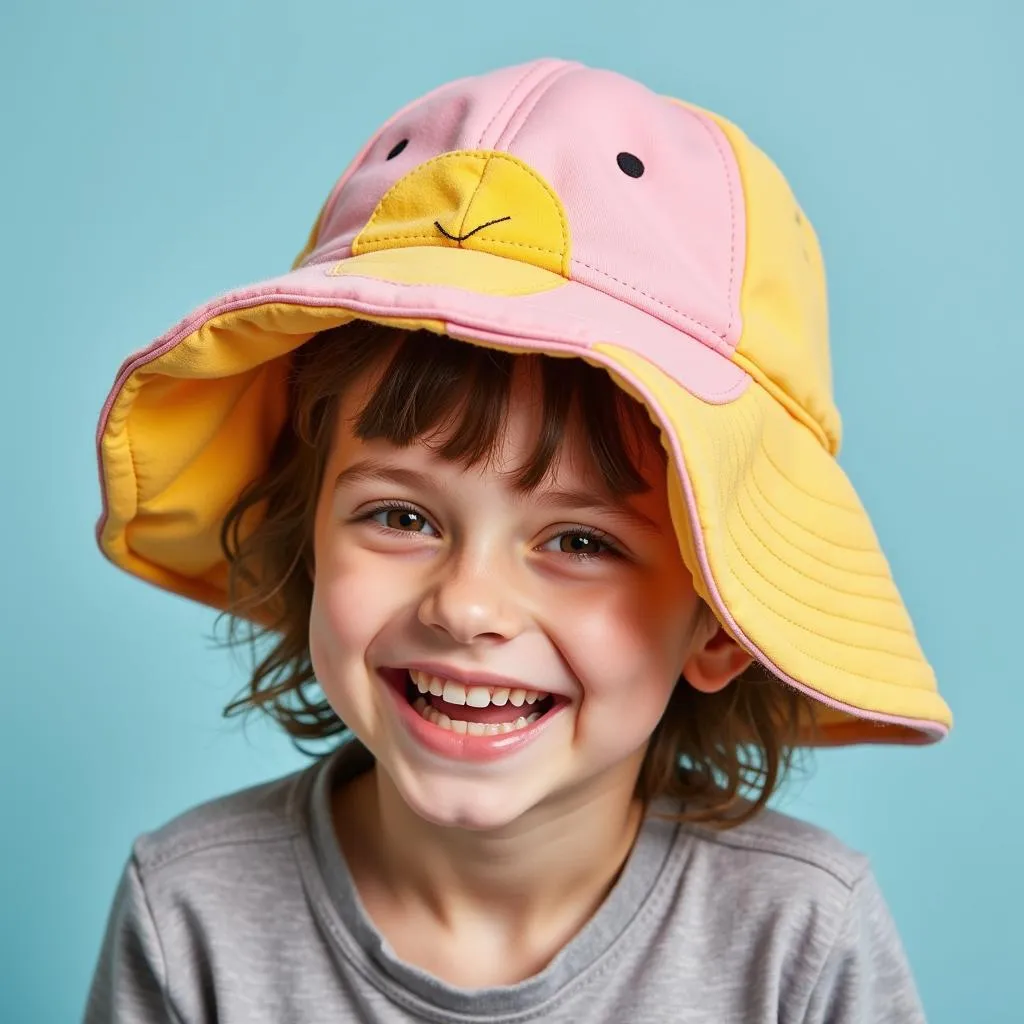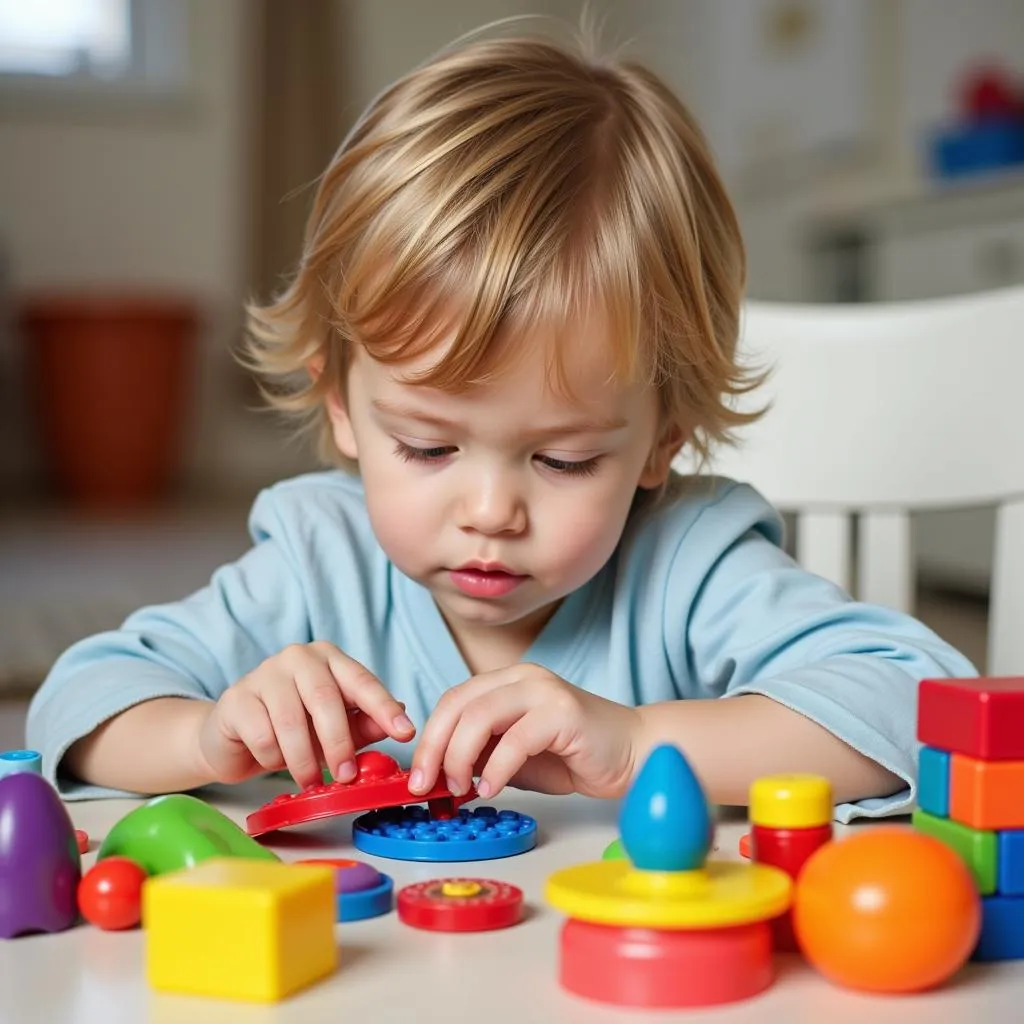Understanding Weighted Hats for Autism
October 9, 2024Weighted hats, sometimes referred to as sensory hats or compression hats, have gained popularity as a tool for individuals with autism spectrum disorder (ASD). These hats are designed with added weight, typically in the form of evenly distributed padding or inserts. The idea behind them is to provide deep pressure stimulation, which some people with autism find calming and organizing.
 Smiling child with weighted hat
Smiling child with weighted hat
How Weighted Hats Might Help
While research on weighted hats specifically is limited, the principles behind them relate to sensory processing and the concept of deep pressure therapy. Many individuals with autism experience sensory sensitivities, which can lead to discomfort, anxiety, and behavioral challenges. Deep pressure stimulation, like that provided by a weighted hat, is thought to:
- Reduce Sensory Overload: The gentle but firm pressure can help ground the wearer and minimize overwhelming sensory input.
- Promote a Sense of Calm: This can be particularly beneficial during times of stress, anxiety, or meltdowns.
- Increase Body Awareness: The pressure can help improve proprioception, which is the awareness of one’s body in space.
Choosing the Right Weighted Hat
When considering a weighted hat for someone with autism, it’s essential to choose carefully:
- Weight Distribution: Opt for hats with evenly distributed weight to avoid pressure points.
- Material and Fit: Breathable and comfortable fabrics are crucial, especially for prolonged wear. The hat should fit snugly but not be too tight.
- Sensory Preferences: Consider the individual’s sensory sensitivities. Some might prefer soft, smooth textures, while others might find textured materials calming.
- Age and Size: Weighted hats come in various sizes and weights to suit different ages and head sizes.
 Different styles of weighted hats
Different styles of weighted hats
Considerations and Precautions
While weighted hats can be helpful, it’s important to use them with care:
- Professional Guidance: Consult with an occupational therapist or healthcare provider experienced in sensory integration to determine if a weighted hat is appropriate and to get recommendations for weight and usage.
- Gradual Introduction: Start with short periods of wearing the hat and gradually increase the duration as tolerated.
- Monitoring: Observe the individual’s response to the hat. Discontinue use if it causes discomfort, anxiety, or any adverse reactions.
Beyond Weighted Hats: Exploring Other Sensory Tools
Weighted hats are just one tool among many that can be helpful for individuals with autism who experience sensory challenges. Other options to explore include:
- Weighted Blankets: These provide deep pressure stimulation over a larger area of the body.
- Compression Clothing: Shirts, vests, or leggings made from snug-fitting materials can offer a sense of security and comfort.
- Sensory Toys: Fidget toys, textured objects, and calming sensory bottles can help with self-regulation and sensory seeking or avoiding behaviors.
 Child interacting with sensory toys
Child interacting with sensory toys
Finding Support and Resources
Navigating sensory sensitivities in autism can be challenging. Remember, there are resources and support available:
- Occupational Therapists: These professionals can assess sensory needs and recommend appropriate interventions, including weighted hats and other sensory tools.
- Autism Support Groups: Connecting with other families and individuals with autism can provide valuable insights, shared experiences, and emotional support.
- Reputable Online Resources: Organizations like Autism Speaks and the Sensory Processing Disorder Foundation offer credible information and guidance.
Finding the right strategies and tools to support an individual with autism is a journey. By understanding the potential benefits and considerations of weighted hats, and by exploring a range of sensory solutions, you can help create a more comfortable and calming environment. Remember, professional guidance is key to making informed decisions about sensory interventions.